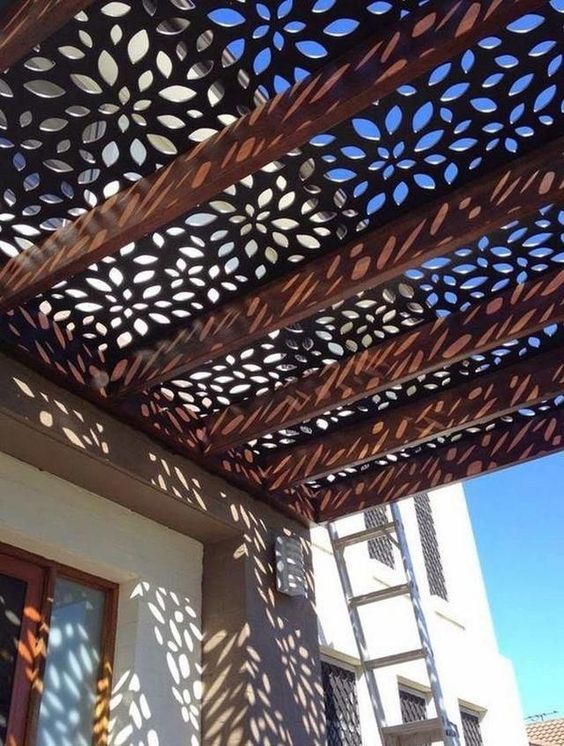Glass, wood, bamboo…there are countless options for pergola coverage, but which one is the best?
In today’s post, we will show you the most used pergola covers and the advantages and disadvantages of each one of them, so you can choose the best type for your home.
The best cover for pergola
Faced with so many options, the question remains “what is the best cover for a pergola?”. The answer will depend on your needs and goals. Some prefer a pergola for decorative and recreational use only, in these cases, options such as plants and bamboo are ideal.
Those who prefer to make the area under the pergola a refuge for moments of relaxation or to create a gourmet space, for example, will need a cover that does not heat up and efficiently protects from rain and sun. Therefore, to choose the best pergola cover, you must first assess your needs and goals. Then it becomes easier to choose the one that best suits your interests.

What types of Pergo covers are available?
Check below which types of coverage for a pergola are most used and clarify your doubts about each of them.
Glass
When talking about pergola coverage, glass is one of the first materials that come to mind. It is clean, elegant and modern, in addition to offering full protection against rain without blocking the passage of light. For pergolas, the ideal is to use laminated glass that is more resistant and safe.
However, the glass cover can be heavy on the pocket. This is one of the most expensive options on the market and the larger the area to be covered, the higher the final cost. Another problem with the glass cover is the heating in the inner area of the pergola. The glass creates an effect similar to that of a greenhouse and can make the environment uncomfortable, especially on the hottest days.
One solution, in this case, is to design the pergola higher, ensuring a more ventilated and fresh space. It is also worth mentioning that glass is a material that requires constant cleaning to remain beautiful and functional.
Advantages: clean, elegant and modern design.
Disadvantages: high cost, heating and frequent cleaning.
Roof tile
The pergola can be covered with tiles, just like a conventional roof. This option is for those who want to ensure maximum protection against rain and are not looking for light.
The tile also guarantees greater thermal comfort, especially when ceramic tiles are used. Because of this, the tile ends up being a better cover option for the pergola.
Low cost and ease of maintenance are also advantages of roofing with tiles.
Advantages: low cost, easy to clean and maintain, and does not heat up.
Disadvantages: does not allow light to pass through.
Wood
Wood can also be used as a pergola cover. In this case, the effect is very similar to a lining made with slats. Wood is a material that naturally brings thermal comfort, in addition to having a more affordable cost. However, it requires periodic maintenance to protect it from rain, sun and termites, as it can easily rot when poorly cared for.
Advantages: elegant and timeless design, thermal comfort, good value for money.
Disadvantages: does not allow light to pass through, requires regular maintenance.
Bamboo
Bamboo and straw fit into the same style of Pergo coverage: rustic and natural. They are easy and inexpensive to install, bring a cosy look to the pergola and require virtually no maintenance. However, they do not guarantee total protection against rain and the sun.
Advantages: easy installation, economical, maintenance-free, rustic and cosy design.
Disadvantages: low protection from sun and rain.
Check out these pergola cover ideas now and get inspired when designing yours:
1.

2.

3.

4.

5.

6.

7.


